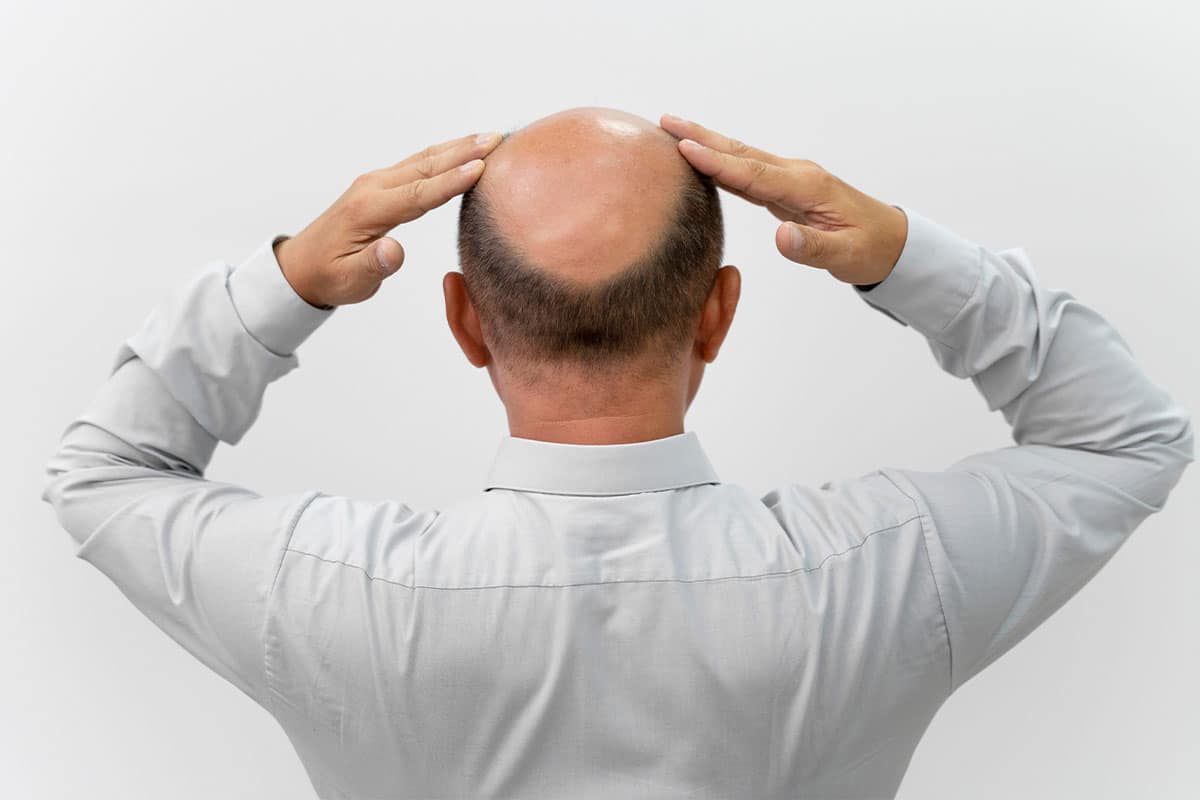Are you considering Follicular Unit Extraction (FUE) to treat hair loss? Then, you may be wondering if you are a suitable candidate for this hair loss treatment. Understanding the nuances that define an ideal candidate for FUE is crucial, as it can significantly influence the success of the procedure. Dr. Bared employs a comprehensive approach to evaluate each unique case, ensuring that candidates are selected based on an in-depth assessment of factors conducive to optimal outcomes.
Understanding the Basics of FUE and Candidate Selection
Follicular Unit Extraction (FUE) is a key technique in hair transplant surgery, designed for individuals looking for a less invasive option. In this hair restoration surgery, specialists take individual follicular units from the scalp and place them into thinning areas, producing results that look natural and involve shorter recovery time than older methods.
Choosing the right candidate for hair transplant treatments involves several criteria:
- Sufficient donor hair density
- Realistic expectations of the hair transplant procedure
- Good health for undergoing the medical procedure
- Scalp flexibility to aid the simple procedure of removing and placing hair grafts
Hair transplants using FUE are a type of cosmetic surgery chosen by people experiencing hair loss. Candidates should be aware of the advantages and limits of hair restoration treatments. Individuals must be well-informed before deciding on this transformative hair surgery.
Step 1: Assessing Hair Loss Pattern and Donor Supply
Analyzing the Norwood Scale for Male Pattern Baldness
To plan a hair transplant properly, it’s crucial to figure out how far someone’s baldness has progressed. Using the Norwood Scale helps us place hair loss into specific categories, ranging from a small recession of the hairline to complete baldness. By analyzing the Norwood Scale for male pattern baldness, we know what to expect in the future and can make smart choices about where to take and place hair during the procedure.
For an accurate stage determination, physicians check individual hair follicles in areas with thinning hair. This tells them how the baldness is likely to move forward, helping them tailor a personalized treatment strategy.
Evaluating Donor Hair Density and Scalp Flexibility
Checking the amount of available hair for a transplant includes evaluating donor hair density. Your doctor will count the number of individual hair follicles in a small scalp area to make sure there are enough healthy hair follicles to move to bald spots without stripping the donor site.
Scalp flexibility is equally important. It affects how easily the hair restoration specialist can remove donor hair. When gently moving the scalp, high flexibility means a larger area for hair collection, which is good for more extensive procedures.
The hair type of each patient matters too. It affects how the final transplant looks and how much hair is needed to look full. For example, someone with thick, curly hair might not need as many grafts as someone with fine, straight hair.
By analyzing the Norwood Scale for male pattern baldness and evaluating donor hair density and scalp flexibility, your surgeon will understand the key elements for a successful hair transplant. These factors help to create a plan that looks at both the current hair loss and what might happen later on.
Step 2: Determining Patient’s Health and Medical History
Health issues that impair blood clotting, and healing, or increase the risk of infection must be managed before surgery to secure successful outcomes and reduce post-op complications.
Patients must also report all current medicines—including prescriptions, over-the-counter drugs, and supplements—as some may affect blood flow or increase bleeding risk during surgery. Others could worsen scarring. Adjusting these medications can help ensure a smooth transplant process and optimal healing.
Identifying health conditions and reviewing the effects of medications on surgery outcomes are critical steps. They promote patient safety and enhance the chances of success for hair transplant candidates.
- Ensure medical conditions are controlled
- Assess all patient medications for potential surgery impacts
- Adjust treatments as needed to reduce risks related to blood and scarring
Overall, a detailed medical review helps ensure the safety and effectiveness of the hair transplant procedure.
Step 3: Analyzing Scalp Characteristics
Examining Scalp Laxity
During your consultation, a hair loss expert will assess your scalp laxity. This is vital because it influences how well the tissue can move during a hair restoration procedure. A sufficiently flexible scalp allows for the effective gathering and placement of grafts, enhancing results and healing. To evaluate flexibility, your scalp will be gently pinched and shifted.
Testing for Allergic Reactions to Anesthetics
Identifying any allergic reactions to anesthetics is crucial before surgery. In your initial consultation, you will discuss your medical history and potentially conduct a patch test. This confirms that your skin doesn’t respond negatively to the anesthetics that will be used. If there’s a reaction—like redness, swelling, or itching—it indicates that the anesthetics might not be suitable for your surgery. This step is essential for ensuring safety and promoting post-procedure healing.
Step 4: Gauging Expectations and Explaining Realistic Outcomes
Managing expectations is a critical phase in the process of hair transplant surgery. Hair loss experts strive to set realistic expectations for what Follicular Unit Extraction (FUE) can achieve. Patients must understand the limitations of the procedure to ensure patient satisfaction.
FUE isn’t a universal solution and success varies based on factors like hair texture, density, and the area’s size. Patients should be aware that FUE might need more than one session for proper coverage, there’s a limit to the density per session, and full hair growth can take up to a year.
Knowing these limitations helps patients have realistic expectations about the surgery’s outcome. It’s important for individuals considering hair transplant surgery to realize that while noticeable improvements are common, the aim is to enhance the appearance of hair thickness rather than completely reversing baldness. An honest approach intends to maintain patient satisfaction throughout their FUE experience.
Step 5: Age Considerations and Long-term Hair Loss Prediction
Age considerations are vital when assessing hair loss and its future pattern, particularly for those contemplating Follicular Unit Extraction (FUE) treatment. It’s crucial to evaluate how mature the hair loss is before treatment, as acting too soon may lead to inadequate results due to ongoing hair loss.
Both men and women with androgenetic alopecia usually see an increase in baldness with age. Men often have a receding hairline and loss at the crown, while women may notice widespread thinning known as female pattern baldness, especially after menopause. Factoring in age helps foresee how much hair a person might lose, influencing the decision to pursue FUE.
For successful FUE, a patient needs a reliable donor area. Therefore, predicting how hair loss will progress is key in deciding if someone is a good candidate. Assessment includes:
- Checking family history to help with long-term hair loss prediction.
- Aggressive baldness in younger people requires meticulous planning.
- Slower hair loss in older adults may mean they are more suitable for the procedure.
Understanding these factors is crucial for providing tailored treatments that are likely to yield long-lasting results.
Additional Advice for Selecting FUE Candidates
Understanding genetics in hair loss is key when considering FUE suitability. Genetics usually set the pattern and speed of hair thinning, affecting how a plastic surgeon will plan the transplant. Candidates with family histories of significant hair loss may have less donor hair available. These individuals need early intervention and careful planning. A genetic evaluation helps pinpoint the best candidates for enduring FUE results.
Lifestyle factors are also crucial for determining FUE suitability. A person’s diet, stress levels, smoking habits, and overall health can influence hair loss and recovery after the procedure. Candidates are evaluated for their:
- Nutrition and diet
- Stress control
- Smoking and substance use
- Overall health and medical history
By considering these factors, the surgeon can gauge a candidate’s healing ability and the future health of the hair grafts, thus improving FUE outcomes. This approach meets validation purposes and promotes a comprehensive selection process.
Precautions and Contraindications for FUE Candidates
For those considering Follicular Unit Extraction (FUE), it’s important to note any precautions and contraindications before undergoing the procedure. Recognizing when FUE may not be the best option is crucial for safety and successful outcomes.
Contraindications include:
- Unstable vitiligo
- Active infections
- Severe scalp conditions like psoriasis
- Blood clotting issues
- Lack of enough donor hair
Patients with a history of keloids or on certain medications that affect healing require extra checks. This is to make sure that FUE won’t increase the risks of complications.
Lifestyle habits, such as smoking, could also affect suitability for FUE. Each patient needs in-depth screening for validation purposes. Recognizing when FUE may not be the best option is essential for avoiding complications and ensuring patient satisfaction.
Ideal FUE Candidate Characteristics
The best candidate for FUE hair restoration has certain qualities that enhance the chances of having a fuller head of hair with natural-looking results. When considering if you are a good match for this procedure, look for these traits:
- Sufficient donor hairs to achieve a fuller head of hair.
- A hairline that doesn’t change, with specific areas that need more hair density.
- Skin that heals well, helping in the recovery and growth of transplanted hair.
- Hair of a quality and color that makes the head of hair look dense and natural.
- Blood flow in the scalp that can nourish the transplanted hair.
- Life phase and health are conducive to healing and maintaining steady hair levels.
- Realistic expectations for improving appearance using hair restoration.
Those who fit this profile tend to enjoy higher patient satisfaction and the best results. The surgery works best when adapted to fit each person’s hairline, skin, and hair growth needs, ensuring that the transplanted hair settles well, and contributes to hair density, encouraging the continuation of hair growth.
For ultimate hair restoration success, it’s vital to align with these characteristics. A thorough understanding of each individual’s unique situation leads to optimal healing, maintenance of hair levels, and the desired outcome—a seamless, natural hairline with a head of hair that meets their validation purposes.
Ready to uncover the best pathway to a fuller, healthier-looking head of hair through FUE? It’s critical to consult with a seasoned professional who can guide you through the process. Dr. Bared is here to offer his deep expertise and tailor a plan that’s just right for you.
Don’t hesitate – unlock your potential for a confident, new look. Schedule a consultation with Dr. Bared today and begin your journey towards optimal results with FUE. Your ideal hair transformation awaits!

